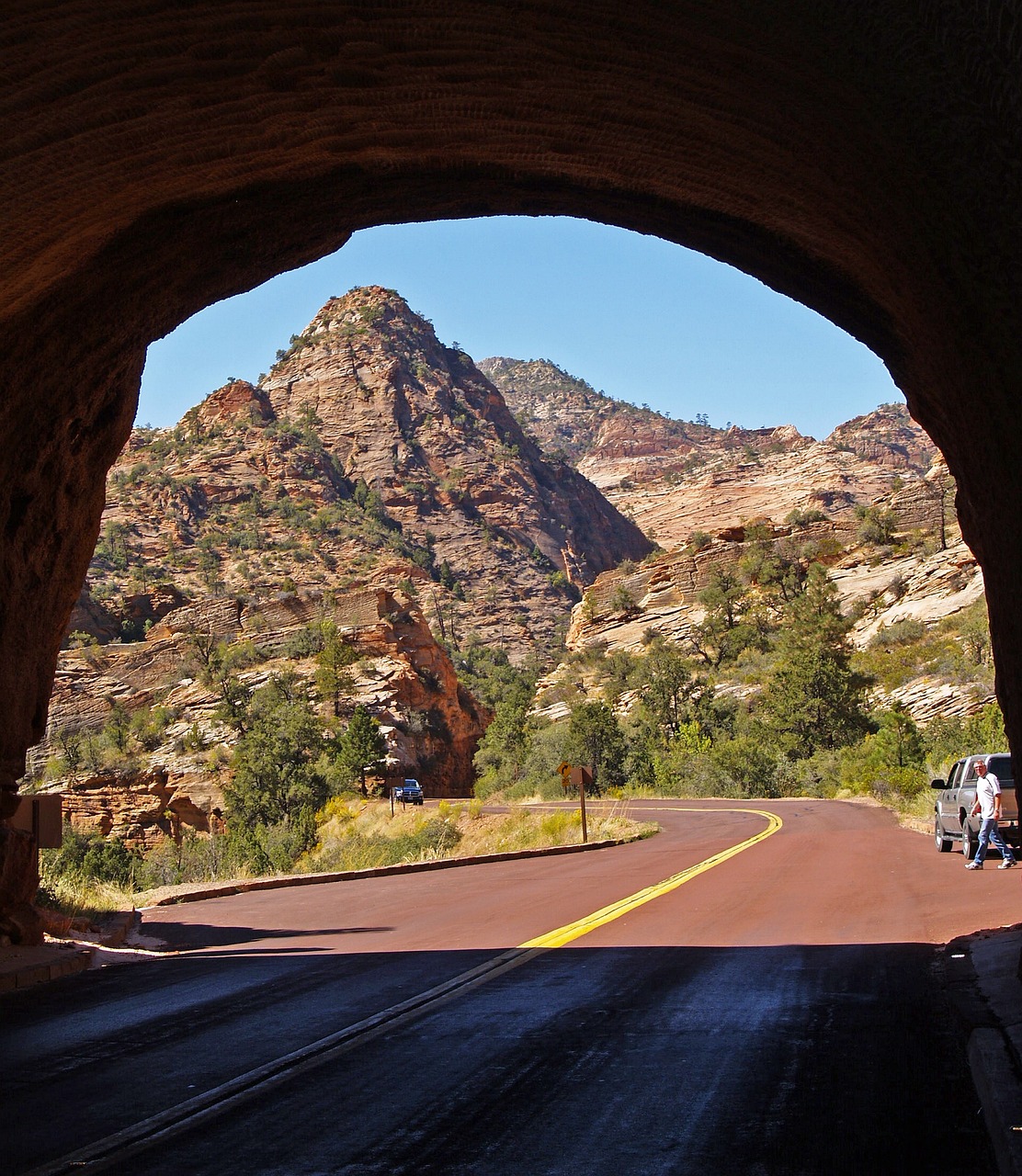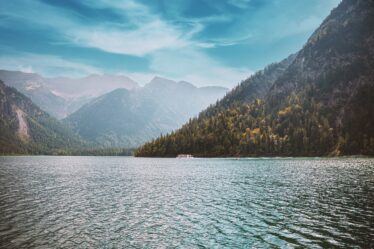
The Zion-Mount Carmel Tunnel is not just an impressive feat of engineering but also a vital passageway that connects the eastern and western sections of Zion National Park in Utah. This iconic tunnel, carved through the heart of Navajo sandstone, provides visitors with an awe-inspiring journey that showcases the stunning natural beauty and geological grandeur of the park. In this comprehensive guide, we will explore the history, construction, and significance of the Zion-Mount Carmel Tunnel, along with practical information for visitors, nearby attractions, and tips for an unforgettable experience.
Historical Background
Early Exploration and Need for a Tunnel
Before the construction of the Zion-Mount Carmel Tunnel, access to Zion National Park was limited and challenging, especially from the east. Early settlers and explorers faced rugged terrain, making travel to the park difficult. Recognizing the need for better accessibility to boost tourism and connect the newly established Zion National Park with the Grand Canyon and Bryce Canyon, plans for a more direct route began to take shape in the early 20th century.
Construction of the Tunnel
The construction of the Zion-Mount Carmel Tunnel began in the late 1920s as part of a broader initiative to improve infrastructure and promote tourism in the region. The tunnel, along with the Zion-Mount Carmel Highway, was built to provide a direct route through the park’s towering cliffs and rugged landscape.
- Timeline: Construction began in 1927 and was completed in 1930.
- Engineering Challenges: Workers faced significant challenges, including drilling through solid sandstone, managing ventilation, and ensuring structural stability. Innovative techniques and sheer determination were crucial in overcoming these obstacles.
Dedication and Opening
The Zion-Mount Carmel Tunnel was officially dedicated and opened to the public on July 4, 1930. Its completion marked a significant milestone in the development of Zion National Park, making it more accessible to visitors and connecting it to other major parks in the region.
Engineering Marvel
Design and Structure
The Zion-Mount Carmel Tunnel is a testament to early 20th-century engineering. Here are some key features:
- Length: The tunnel spans 1.1 miles (1.8 kilometers), making it one of the longest tunnels of its time.
- Construction Method: The tunnel was excavated using a combination of drilling, blasting, and manual labor. Workers drilled holes into the rock, packed them with dynamite, and detonated the charges to break through the sandstone.
- Ventilation Windows: To ensure proper ventilation and provide stunning views, several large windows (or galleries) were carved into the tunnel walls. These windows also allowed workers to remove debris and provided light during construction.
Architectural Significance
The tunnel’s construction not only addressed practical transportation needs but also highlighted the ingenuity of the engineers and workers involved. The use of natural light and ventilation windows added a unique aesthetic element, blending functionality with beauty.
Journey Through the Tunnel
Entering the Tunnel
The experience of driving through the Zion-Mount Carmel Tunnel is a highlight for many visitors to Zion National Park. The tunnel connects the park’s scenic drive to the Zion-Mount Carmel Highway, offering a seamless transition between the park’s iconic landscapes.
- Approach: As you approach the tunnel, the road begins to climb, providing glimpses of the dramatic scenery that awaits.
- Entrance: The tunnel’s entrance is marked by its impressive stone façade, blending harmoniously with the surrounding landscape.
Inside the Tunnel
Driving through the tunnel is an adventure in itself. The narrow, dimly lit passage creates a sense of anticipation and excitement.
- Windows: As you progress through the tunnel, the strategically placed windows offer brief but breathtaking views of the canyon outside. These windows not only serve a functional purpose but also enhance the visitor experience.
- Lighting: The tunnel is minimally lit, adding to the sense of mystery and awe as you make your way through.
Exiting the Tunnel
Emerging from the tunnel, visitors are greeted by stunning vistas of Zion’s eastern side. The contrast between the darkness of the tunnel and the bright, expansive views creates a dramatic and memorable experience.
Practical Information for Visitors
Access and Directions
The Zion-Mount Carmel Tunnel is located within Zion National Park, and accessing it requires entering the park through one of its main entrances.
- From the South Entrance: Located near Springdale, Utah. Follow Zion Canyon Scenic Drive to the tunnel.
- From the East Entrance: Located near Mount Carmel Junction. The tunnel can be accessed via the Zion-Mount Carmel Highway (UT-9).
Tunnel Restrictions and Regulations
Due to the tunnel’s size and historical significance, there are specific restrictions and regulations in place to ensure safety and preserve its integrity.
- Vehicle Size Restrictions: The tunnel has height and width restrictions. Vehicles over 11 feet 4 inches in height or over 7 feet 10 inches in width (including mirrors) require a special permit and must be escorted through the tunnel.
- Oversize Vehicle Fee: A fee is charged for oversize vehicles requiring an escort. This fee helps manage traffic flow and maintain safety.
- Traffic Control: To accommodate two-way traffic, the tunnel operates under a traffic control system during peak times. Be prepared for potential delays and follow ranger instructions.
Best Times to Visit
The Zion-Mount Carmel Tunnel is open year-round, but the best times to visit depend on your preferences for weather and crowd levels.
- Spring and Fall: These seasons offer mild temperatures and fewer crowds, making them ideal for a more relaxed visit.
- Summer: While summer is the peak tourist season with warmer temperatures, it also provides the longest daylight hours for exploring the park.
- Winter: Winter visits offer a unique and quieter experience, with the possibility of snow adding a magical touch to the landscape.
Nearby Attractions
The Zion-Mount Carmel Tunnel is just one of many incredible attractions within Zion National Park and the surrounding area. Here are some must-see sights and activities:
Zion Canyon Scenic Drive
This iconic drive takes you through the heart of Zion Canyon, offering access to some of the park’s most famous landmarks and trailheads.
- Highlights: The Great White Throne, Weeping Rock, Angels Landing, and the Temple of Sinawava.
- Activities: Hiking, photography, and wildlife viewing.
Zion Narrows
The Zion Narrows is one of the most popular hikes in the park, taking you through a stunning slot canyon carved by the Virgin River.
- Experience: Hike through the river, wade through narrow passages, and marvel at the towering canyon walls.
- Preparation: Wear appropriate footwear and be mindful of water levels and weather conditions.
Checkerboard Mesa
Located near the eastern entrance of the park, Checkerboard Mesa is a striking geological formation characterized by its unique cross-hatched pattern.
- Viewing: Pull over at the designated viewpoint along the Zion-Mount Carmel Highway for a closer look.
- Photography: The best lighting for photography is typically in the early morning or late afternoon.
Bryce Canyon National Park
Located about an hour and a half drive from Zion, Bryce Canyon National Park offers a completely different but equally stunning landscape.
- Highlights: The Bryce Amphitheater, Thor’s Hammer, and the Navajo Loop Trail.
- Activities: Hiking, stargazing, and exploring the park’s unique hoodoos.
Tips for a Memorable Visit
Plan Ahead
- Permits and Fees: Check for any necessary permits or fees, especially if traveling with an oversize vehicle.
- Reservations: Make reservations for accommodations and guided tours in advance, particularly during peak seasons.
Safety Considerations
- Weather: Monitor weather conditions and be prepared for sudden changes, especially if hiking or engaging in outdoor activities.
- Hydration: Carry plenty of water and stay hydrated, as the desert environment can be dehydrating.
- Trail Safety: Stick to marked trails, follow park guidelines, and be mindful of wildlife.
Capture the Moment
- Photography: Bring a good camera or smartphone to capture the stunning scenery. The tunnel windows offer unique photo opportunities.
- Journaling: Consider keeping a travel journal to document your experiences and reflections during your visit.
Conclusion
The Zion-Mount Carmel Tunnel is more than just a passage through the mountains; it’s a journey through time, showcasing the ingenuity of early 20th-century engineering and the timeless beauty of Zion National Park. Whether you’re an avid adventurer, a history enthusiast, or a lover of natural wonders, the tunnel and its surroundings offer a rich and rewarding experience. Plan your visit, embrace the adventure, and discover the magic of the Zion-Mount Carmel Tunnel for yourself.
